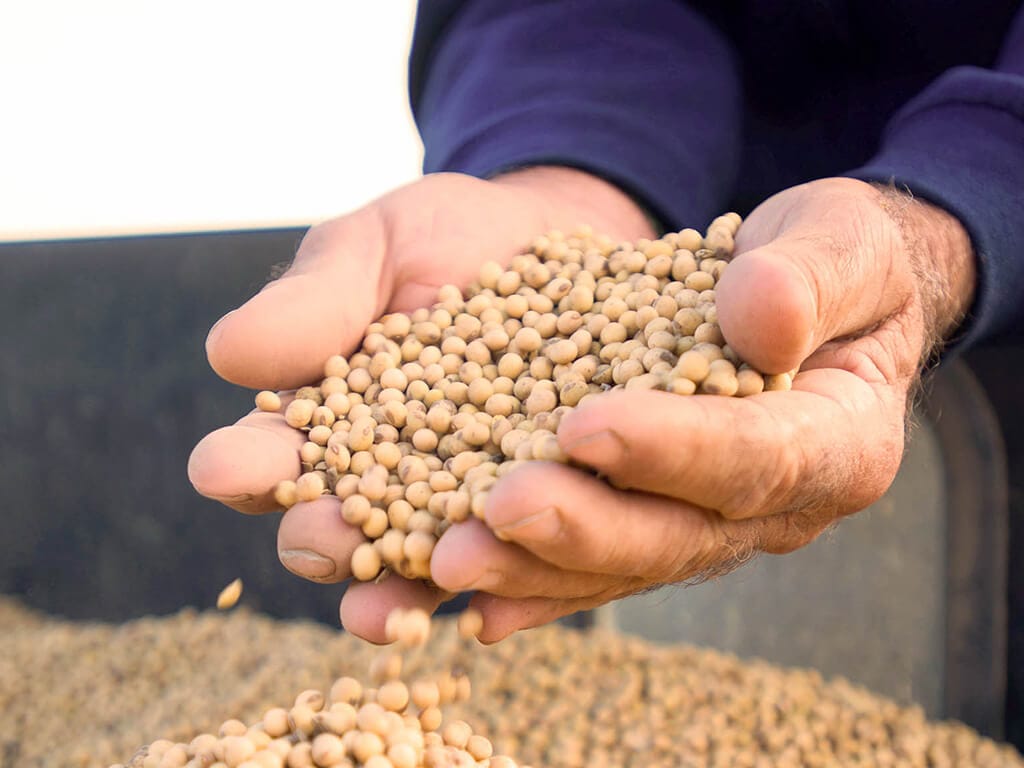100 Years of Soybeans in Arkansas: Legacy and the Debate Ahead
Arkansas celebrates 100 years of soybean production, honoring the crop’s legacy, the resilience of farmers, and the ongoing challenges they face amid global trade pressures.

In the rolling fields of Arkansas, soybeans are more than just a crop. They tell a century-long story of risk, resilience, and community. A hundred years ago, most Arkansans had never seen a soybean. Today, what began as small experimental plantings has grown into the backbone of the state’s agriculture, sustaining local economies and spreading across vast fields that produce millions of bushels each year. Arkansas soybeans now reach markets across the United States and abroad, standing as a major export that helps define the state’s economy.
The soybean boom of the late 20th and early 21st centuries has slowed, but the communities and industries built around the crop remain remarkably resilient. As Arkansas celebrates 100 years of soybean cultivation, Governor Sarah Huckabee Sanders has recognized the crop’s significance by declaring November “Soybean Month” and launching programs to honor its enduring impact.
The milestone is more than a celebration. It is a recognition of an industry that has shaped the state, sustained rural communities, and honored the farmers whose dedication continues to drive it forward.
The Soybean Legacy in Arkansas
Soybeans were first planted in Arkansas in 1925, an experiment in a landscape long dominated by rice and corn. At the time, the crop was nearly unknown in the state, and few could have predicted its future. During the Great Depression, drought-stricken Dust Bowl regions across the United States turned to soybeans to restore soil fertility, leveraging the plant’s nitrogen-fixing properties. Arkansas joined this effort, quietly planting the seeds of an agricultural revolution.
In the years that followed, rising demand led to expanded acreage and production to meet government needs. Public campaigns promoting the crop’s versatility, along with endorsements from figures such as Henry Ford, highlighted soybeans’ wide-ranging uses and cemented the crop’s national significance.
World War II brought new urgency. Soybeans became essential across North America and Europe, serving as substitutes for other protein foods and as a source of edible oil. The growing demand during this period anchored the crop as a cornerstone of Arkansas agriculture. Once nearly absent in 1900, by 2000 soybean plantings in the United States covered more than 70 million acres, second only to corn, making soybeans the nation’s largest cash crop.
Today, soybeans remain a defining force in Arkansas agriculture. They cover nearly three million acres, produce more than 166 million bushels annually, and generate roughly $1.7 billion in value. The state ranks tenth nationally in soybean production, with about $1 billion in annual export value supporting local economies and trade. Even amid the pressures of 2025, from tariffs to shifting global markets, soybeans and soybean products continue to be Arkansas’s largest agricultural exports.
A Challenging Period for Soybean Farmers
Arkansas soybean farmers face several significant challenges in 2025. Low commodity prices, driven by large harvests in other countries and ongoing global trade tensions, have reduced soybean values and made selling crops more difficult. High input costs add further strain, as production expenses remain high while market prices stay low, sometimes resulting in financial losses.
The Arkansas Cooperative Extension Service offers resources to help farmers navigate these difficulties, providing guidance on selecting early-planting varieties and using precision agriculture technologies to improve efficiency.
A recent trade development offers some relief. China, the world’s largest importer of soybeans, has agreed to resume U.S. soybean purchases after halting imports earlier in the spring amid trade disputes. Negotiations between President Trump and Chinese President Xi Jinping reportedly went well. According to U.S. Treasury Secretary Scott Bessent, China will purchase 12 million metric tons this year and at least 25 million metric tons annually for the next three years.
Despite this development, soybean futures remain uncertain. The strong demand seen in previous decades has slowed, and outside of China, few new consumer markets are emerging while producers in countries such as Brazil are increasing their output.
China has invested in infrastructure in other soybean-exporting nations, enabling countries like Brazil and Argentina to capture portions of the U.S.’s historical market share. These shifts make it difficult for the United States to regain its previous dominance in the global market.
Experts stress the need for greater investment in domestic infrastructure. Expanding facilities such as soybean crushing plants and making other improvements could help the United States remain competitive and fully leverage trade agreements.
A Monthlong Celebration Ongoing
While challenges persist, there is widespread agreement that Arkansas should honor the legacy and impact of its soybean industry. The monthlong celebration is organized by the Arkansas Soybean Promotion Board, or ASPB, a farmer-led organization established in 1971 through Act 259 of the Arkansas General Assembly. The ASPB plays a vital role in supporting the state’s soybean industry through research, education, and promotion, investing checkoff funds in initiatives that benefit producers across Arkansas.
The ASPB encourages all residents to join in the celebration. For recipes, educational resources, and stories highlighting the state’s leading crop, visit TheMiracleBean.com and subscribe to the Bean Brief newsletter for updates throughout Arkansas Soybean Month.
For Arkansas soybean farmers, farming is more than a job. It is a way of life. Season after season, they continue to show up and tend their fields, navigating challenges while upholding a tradition that has shaped communities and the state’s economy. Now it is time to celebrate that enduring legacy.





